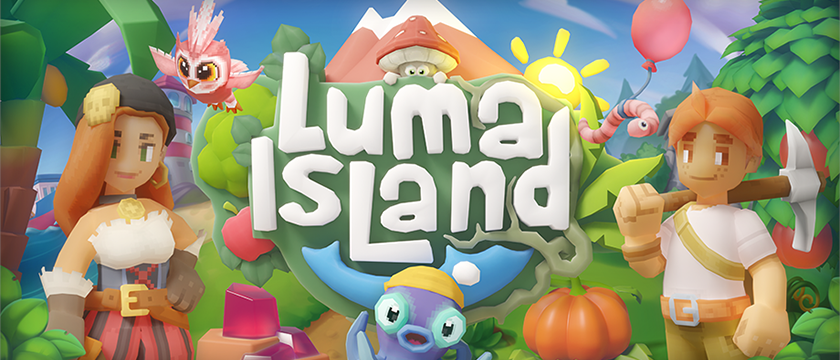Game: 7th Sector
Genre: Puzzle, Puzzle-platformer
System: Nintendo Switch
Developers|Publishers: Sometimes You | Sometimes You
Price: US $19.99| AU $30.00|CA $ 26.45|£17.99 | €19,99
Age Rating: US T | EU 18+
Release Date: 5th February 2020
Review code used, thanks to Sometimes You
In 2020 traditional puzzle games aren’t exactly flying off of the shelves. I’ve spoken about issues with contemporary puzzle games before and I want to preface by saying that 7th Sector is exciting because it is pushing boundaries. It is difficult, it is atmospheric, and it tries to aim high.
A Brief Note on Visuals
Before jumping into a review I want to acknowledge that 7th Sector is a very good-looking game.

There is no question about that. The environment design is wonderful and rich. Though I pick on the story a bit throughout this review, often times it’s the visuals of this game which keep us immersed and continually interested in learning more about it. The design of the environment feels cohesive with the story being told and often contributes to the story itself. I don’t want to talk about the visuals too much more, at least not just as eye-candy. If I mention the visuals, I want us to think of them as contributing to the story itself or to the puzzles and how they feel.
The Puzzle Genre in 2020
Now, I want us to take a moment, to understand the predicament of the puzzle genre in the here and now of 2020.
If you’re a puzzle game enthusiast, I think you’ll understand what I mean when I say that I’m kind of tired of similar and rehashed puzzles. This often includes sliding image puzzles, balance puzzles, simple math puzzles, puzzles where you have to piece something together, marble puzzles, “puzzles” which are really just games of bejeweled, matching card puzzles, puzzles where you have to find an object or interrogate enough people in order to get some piece of information which will act as a key to unlocking progression.
You get what I mean?
I understand it’s important to have staple puzzles, but I also believe that each game should have its own take on them, not just what feels like a copy and pasted puzzle. In this sense puzzles should be integrated into the world itself, altered for this reason. Unfortunately, more often than not, this isn’t the case.
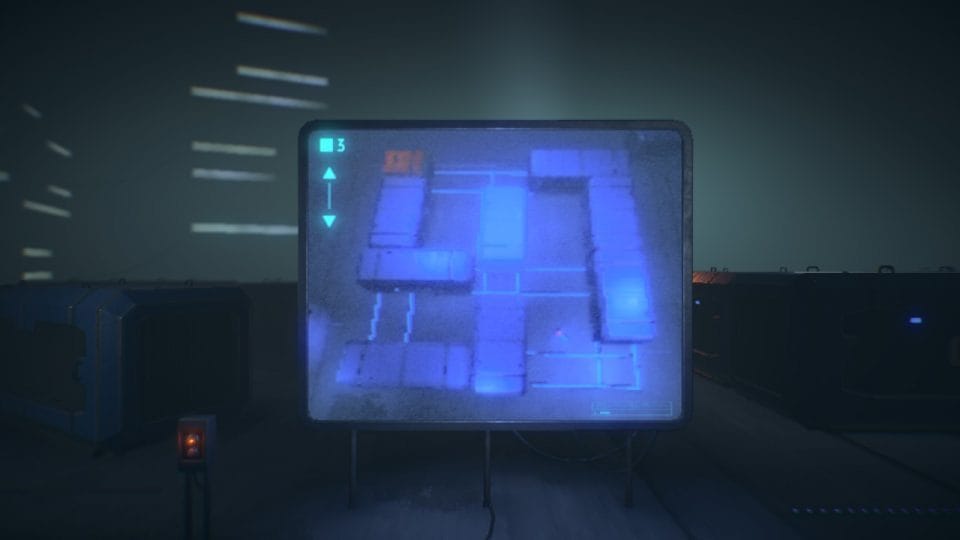
A Few Good Examples
I’ve played puzzle and point-and-click style games before. Let me be clear, 7th Sector is not point-and-click, it’s closer to a puzzle platformer. But you may understand why I bring the genre into conversation.
Currently it seems that the bastion of puzzle games has become point-and-click style games. Which, as I said at the beginning of this article, often aren’t pushing their puzzles to be more difficult. They’re without a learning curve and also lack a system of internal patterns for us to learn and get into a groove with. Part of this is largely because many point-and-click games or puzzle-platformers, have become focused on telling stories, some of which aren’t satisfying enough without solid puzzles.
I think one of the few puzzle based series, albeit not within the point-and-click genre, which I’ve seen do it right and balance the two has been the Professor Layton series (read Chloe’s review of the latest installment, here). The original Abe’s Oddysee (sic) series is also an excellent example of puzzle platforming with an emphasis on the puzzles, while a game like Forgotton Anne (sic) is a puzzle platformer more interested in telling a strong narrative which has its spaces filled in by puzzle elements and dialogue choices.
However, not everyone wants to settle down for a peaceful game like Layton’s, maybe the puzzles in Abe’s Odyssey are too structured around escort missions, and Forgotton Anne too much around the story.
Enter 7th Sector.
7th Sector takes place in a dystopian cyberpunk world. Much of the story has to be pieced together from images you collect and from things going on in the background of the story.

This could have been a huge flaw as the story doesn’t feel as tightly woven as it could have been. However, in exchange for not having a narrative given directly to us, we are simultaneously put into a situation of having to carefully investigate the world around us. We’re forced to pore over details to try and extract a story, and, while ultimately there are some gaps left unfilled because of this approach, I do think it’s a worthwhile tradeoff. Especially since, as we search through the world, we’re also filled with a fearful question “what are we?”
What are we?

We begin our journey in front of an old CRT style TV, it’s a snowy static-filled signal. Gradually, a dim silhouette begins to emerge from the static filled screen. As we move the left joystick, we see it pushing one way or another. Eventually we push hard enough, and we escape our cathode ray confinement.
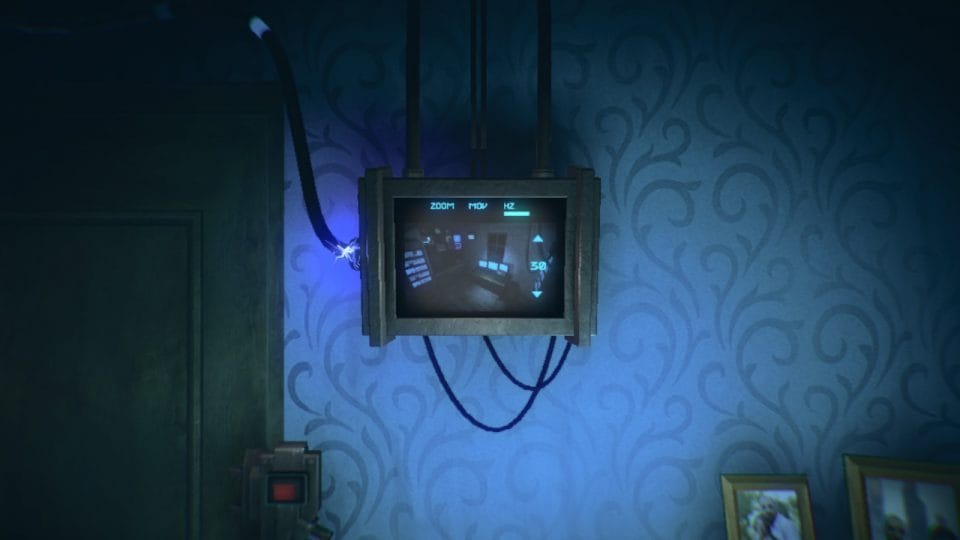
The body we only saw in silhouette, our body, is now a spark travelling down cables.
Throughout the adventure we’ll inhabit more than just cables. I think leaving those moments unspoiled is imperative. However, it is in this “body” we have, which we begin our adventure. Towards what or where is an unrevealed answer that keeps us moving forward.
Story
It is important to note that the story has 4 different endings. Which one you get depends on certain key actions, on whether you solve certain puzzles or not. Beyond this the story is still loose, still evidence oriented. Nevertheless, it’s enough glue to hold the world together. I certainly don’t want you to think it’s the worst story I’ve seen, it’s far from that. In fact, it’s a testament to how compelling the work is, that I care enough to feel hesitant to call it anything but successful.
Without spoiling anything, my main concern with the story is that after spending a few hours piecing what you can together, the game never rewards you with a clear story, never fills in the gaps left behind. However, the quality of the puzzles outweigh this flaw. One last disclaimer, please don’t let my uncertainty about the story dissuade you, I can at least promise you it’s not a story you have to drag your feet through and it is not enough to make the game feel like a negative experience.
Gameplay Time
It’s time to talk gameplay. I did a blind playthrough, without any guides or walkthroughs. After completing one playthrough, I did watch a walkthrough in order to see all the things I missed, which wasn’t very much. I’m telling you this because while it took that walkthrough 3 hours of playtime, knowing the solutions to the puzzles, it took me a little over 5 hours of working through the puzzles. This is not accounting for the time I would pause the game and go to the Switch’s home menu while I took out pen-and-paper to solve some algebraic problems.
Yes, you read that right.
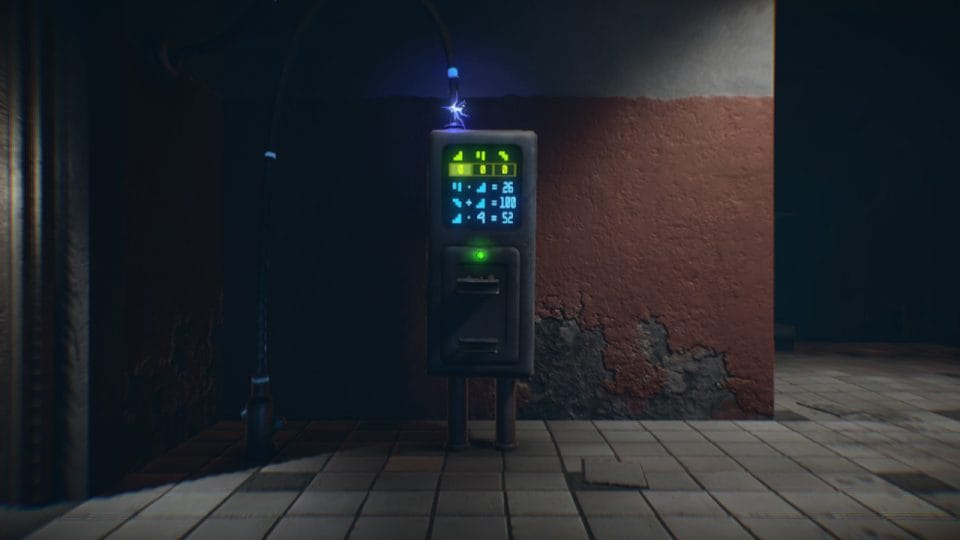
Puzzles
For myself, the puzzles presented are, by far, the most exciting part about 7th Sector. Whereas other games have had me unstimulated, 7th Sector had me in pain, but the good kind.
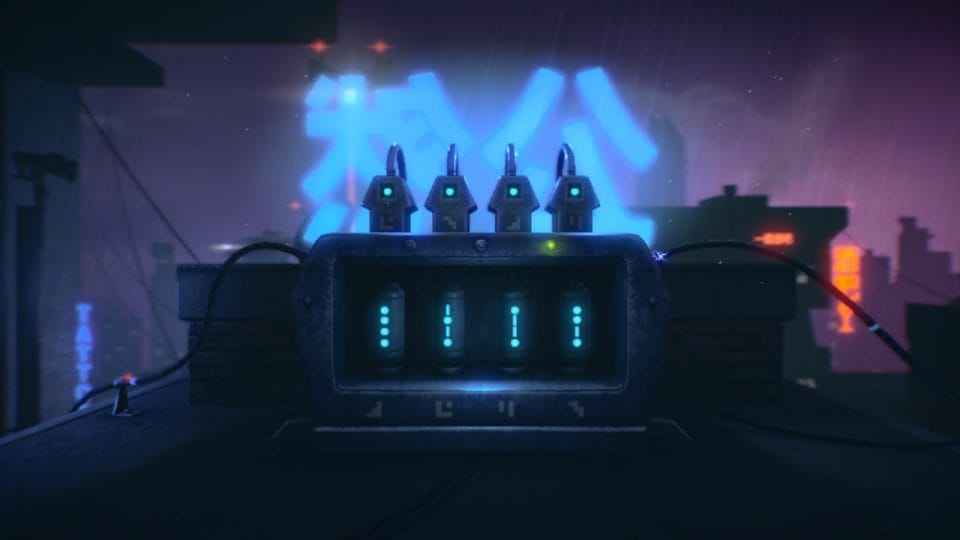
The game had me looking up math tutorials to remind myself of ideas I had left behind years ago. I came to a moment where I was presented a system of equations and asked to solve. I remembered it was possible, that I had done this kind of problem solving before (years ago), but I couldn’t do it alone.
I found myself, instead of looking up a walkthrough, using youtube for math tutorials. 7th Sector was choosing to openly force me to reflect on my algebraic memories. Despite how lame I must sound right now, it was exhilarating to feel a puzzle game push me like that.
Rest assured, this is not the only kind of puzzle present in 7th Sector. But just like the precursor to the algebra was based on simple addition, the rest of the puzzles felt similarly associated with one another, building up and growing in complexity. Many of the puzzles center around pattern recognition, occasionally you get brilliant new puzzles which often have a basis in coding or other technologies. Look at the pictures throughout this review for a taste. Eventually I was tuned in to the kinds of puzzles and was solving them faster than before though this isn’t to suggest that they were unchallenging.
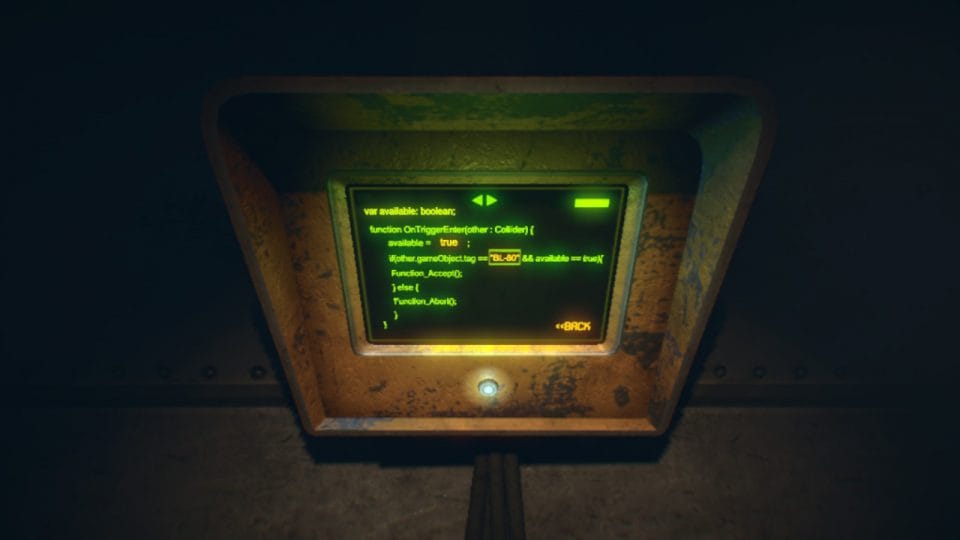
Sadly, despite this excellence in math and logic puzzles, not every kind of puzzle is perfectly executed. I would say the weakest point in this game is its kinetic puzzles, many of which felt more difficult than they needed to be, or which weren’t finely tuned enough to work seamlessly or without issue. In fact, much of their difficulty was a byproduct of not having the controls finely tuned enough and often led to an unintended layer of difficulty.
I recall two particular scenes, but I won’t give too much away. Both of these areas took me far too long and left me feeling frustrated at the controls rather than at the puzzle or any ineptitude on my part.
These puzzles felt mechanically unfair. Thankfully this kind of puzzle was in the minority.
Final Thoughts
I think much of my turmoil over this game can be solved by a different play style. I won’t lie, I played this as a reviewer and had the intentions of getting through this game as quickly as possible. However, if I were to imagine myself taking this game piecemeal and experiencing it more episodically, I think I would have enjoyed it far more. 5 hours may not seem like a long time, but that was me rushing the best I could. Playing it after your day has ended, before bed, would certainly stretch it out a bit, and would also make the frustrating segments tolerable, perhaps eventually enjoyable.
7th sector is a puzzle game which demands a fair amount of effort. Though some of its puzzles may feel unfair at times, it is ultimately a great game. I have nitpicked, because I think it’s important to nitpick good things. 7th Sector is definitely a good thing.
Let’s not forget the visuals of this game, they are definitely a huge plus and pick up the slack when it comes to story. Despite this, I think I have to put the puzzles before the visuals, given the genre we’re in. More often than not, you are presented with solid puzzles which (if you’d like) you could treat as daily puzzles and really spread the game out.
Additionally, the general atmosphere of the game keeps things interesting and makes you keep chasing answers. Because of this I can only say that 7th Sector feels like a step in the right direction for puzzle games as a whole.
So, while not perfect, if you’re a fan of puzzle games with a world that isn’t merely superficial, and a decent story to match, playing through the brain demanding world of 7th Sector is, ironically, a no-brainer.
Final Verdict: I like it a lot.




